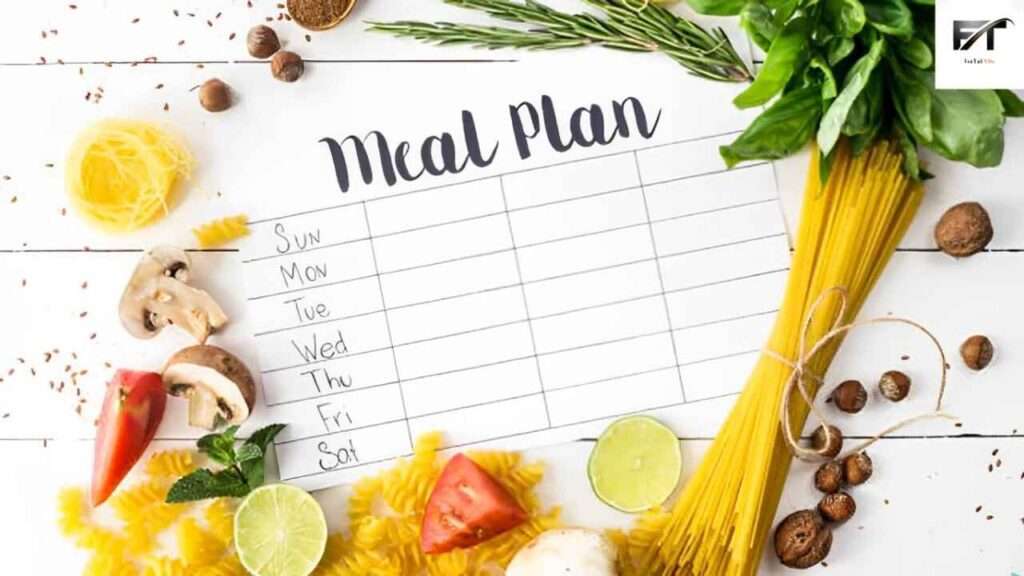Eating healthier and saving time can feel like a daunting task, especially with busy schedules and numerous responsibilities. However, with some strategic planning and simple tactics, it’s entirely feasible to enjoy nutritious meals without spending excessive time in the kitchen every day. Let’s delve into detailed strategies on how to achieve this balance:

1. Plan Your Meals in Advance
Planning your meals in advance is a cornerstone of efficient and healthy eating. By taking a little time at the beginning of each week to map out your meals, you set yourself up for success. Consider your schedule, preferences, and nutritional needs when planning. Aim for a balance of protein, vegetables, whole grains, and healthy fats in each meal.
When planning, think about quick and easy meals for busy days and perhaps more elaborate recipes for days when you have more time. Utilize cookbooks, recipe websites, or meal planning apps to find inspiration and keep your meals varied and interesting.
2. Create a Shopping List
Once you’ve planned your meals, it’s time to create a shopping list. Organize your list by food categories such as produce, pantry staples, dairy, and protein to make navigating the grocery store easier. Check your pantry and refrigerator to see what ingredients you already have on hand, and only add items to your list that you need.
While making your list, consider incorporating seasonal fruits and vegetables, as they’re often fresher and more affordable. Additionally, be mindful of any special dietary requirements or preferences when selecting ingredients.
3. Prep Ingredients Ahead of Time
Prepping ingredients ahead of time is a game-changer when it comes to saving time during the week. Spend some time washing, chopping, and portioning out ingredients like vegetables, fruits, and proteins as soon as you return from the grocery store. Store these prepped ingredients in airtight containers or reusable bags in the refrigerator to keep them fresh.
Consider marinating meats, cooking grains, or prepping sauces and dressings in advance to streamline meal preparation even further. Having these building blocks ready to go will make it easier to throw together healthy meals in a hurry.
4. Embrace One-Pot Meals
One-pot meals are a busy cook’s best friend. These versatile dishes, which include soups, stews, stir-fries, and casseroles, require minimal prep and cleanup while still offering a nutritious and satisfying meal. Experiment with different flavor combinations and ingredients to keep things interesting.
The beauty of one-pot meals lies in their simplicity. You can easily adjust the ingredients based on what you have on hand or your dietary preferences. Plus, they’re perfect for batch cooking and can be enjoyed as leftovers throughout the week.
5. Cook in Batches
Batch cooking is a time-saving technique that involves preparing large quantities of food at once to be enjoyed over multiple meals. Set aside a block of time, such as a weekend afternoon, to cook up big batches of your favorite dishes. This could include soups, chili, roasted vegetables, grilled chicken, or grains like quinoa or brown rice.
Divide the cooked food into individual portions and store them in airtight containers in the refrigerator or freezer. Not only does batch cooking save time during the week, but it also helps prevent food waste and ensures you always have healthy options on hand when hunger strikes.
6. Stock Your Freezer
A well-stocked freezer is a treasure trove of convenient meal options. Take advantage of your freezer by preparing extra portions of meals and freezing them for later use. Soups, stews, casseroles, and sauces all freeze well and can be reheated quickly for a nutritious meal on busy nights.
When freezing meals, be sure to use freezer-safe containers or bags to prevent freezer burn and maintain freshness. Label each container with the contents and date to keep track of what’s inside and how long it’s been frozen.
7. Choose Healthy Convenience Foods
While fresh, whole foods are ideal, there’s no shame in relying on healthy convenience foods to simplify meal prep. Look for pre-cut fruits and vegetables, canned beans, pre-cooked grains, and frozen fruits and vegetables at the grocery store. These items can be used as building blocks for quick and nutritious meals without sacrificing quality or flavor.
When choosing convenience foods, read the labels carefully and opt for options with minimal added sugars, sodium, and preservatives. Look for products with short ingredient lists and recognizable ingredients to ensure you’re making the healthiest choices possible.
8. Keep Your Kitchen Organized
An organized kitchen is essential for efficient meal prep. Take some time to declutter and organize your pantry, refrigerator, and cabinets so you can easily find what you need when you need it. Invest in storage containers, jars, and labels to keep ingredients fresh and organized.
Designate specific areas of your kitchen for different tasks, such as a chopping station, a cooking area, and a storage area for leftovers. Keep frequently used tools and utensils within easy reach, and consider investing in time-saving gadgets like a slow cooker, instant pot, or food processor to streamline meal prep even further.
9. Don’t Overcomplicate Things
When it comes to eating healthier and saving time, simplicity is key. Focus on preparing simple, nutritious meals with just a few ingredients rather than trying to recreate complicated recipes. Choose recipes that require minimal prep and cooking time, and don’t be afraid to use shortcuts like pre-packaged salad mixes, pre-cooked grains, or rotisserie chicken to save time without sacrificing flavor or nutrition.
Remember that healthy eating doesn’t have to be complicated or time-consuming to be delicious. By keeping things simple and focusing on whole, unprocessed foods, you can enjoy nutritious meals without spending hours in the kitchen.
10. Stay Flexible
Despite your best efforts, there will inevitably be days when things don’t go according to plan. Life happens, and that’s okay. Stay flexible and be willing to adapt your meal plan as needed throughout the week. Embrace leftovers, make use of pantry staples, and don’t be afraid to improvise if you find yourself short on time or ingredients.
If you’re unable to stick to your meal plan one day, don’t stress about it. Instead, focus on making the best choices you can with the time and resources you have available. Remember that eating healthy is a journey, not a destination, and it’s okay to take small detours along the way.
By following these tips and strategies, you can save time and eat healthier throughout the week without sacrificing flavor or nutrition. With a little planning and preparation, you’ll be well on your way to enjoying delicious, nourishing meals every day.
Also Read – What Is The Impact of Food Processing on Nutrition
